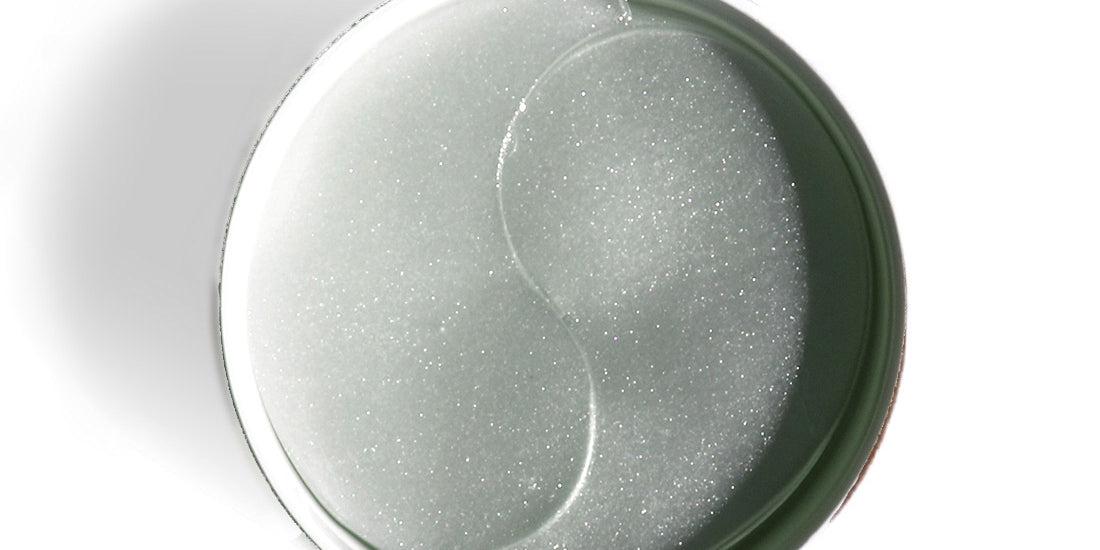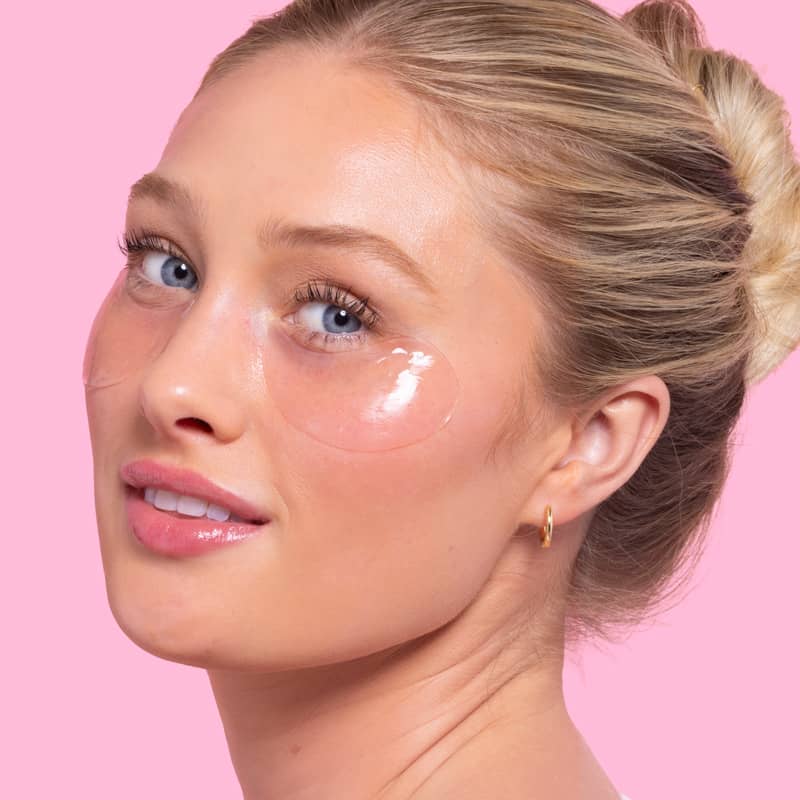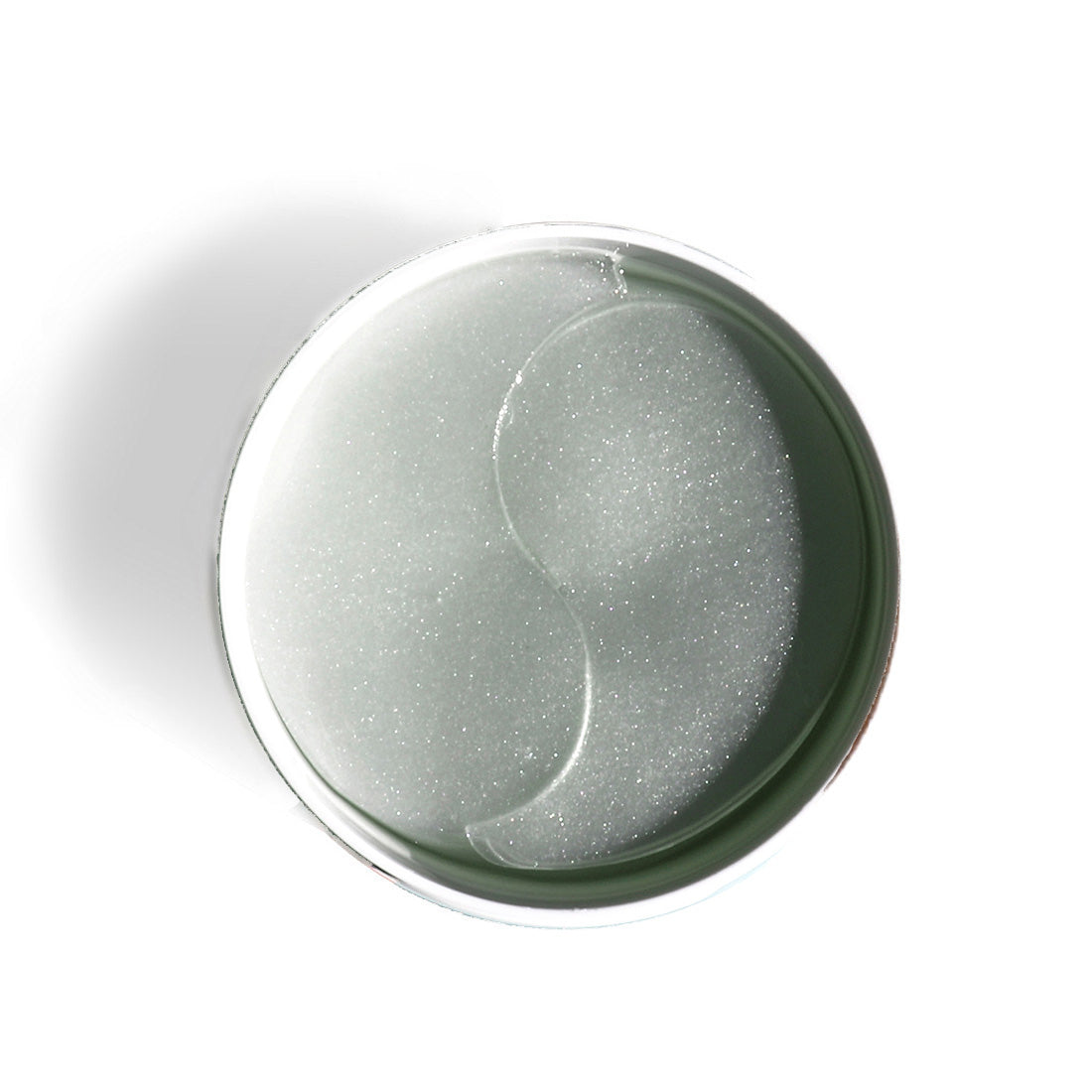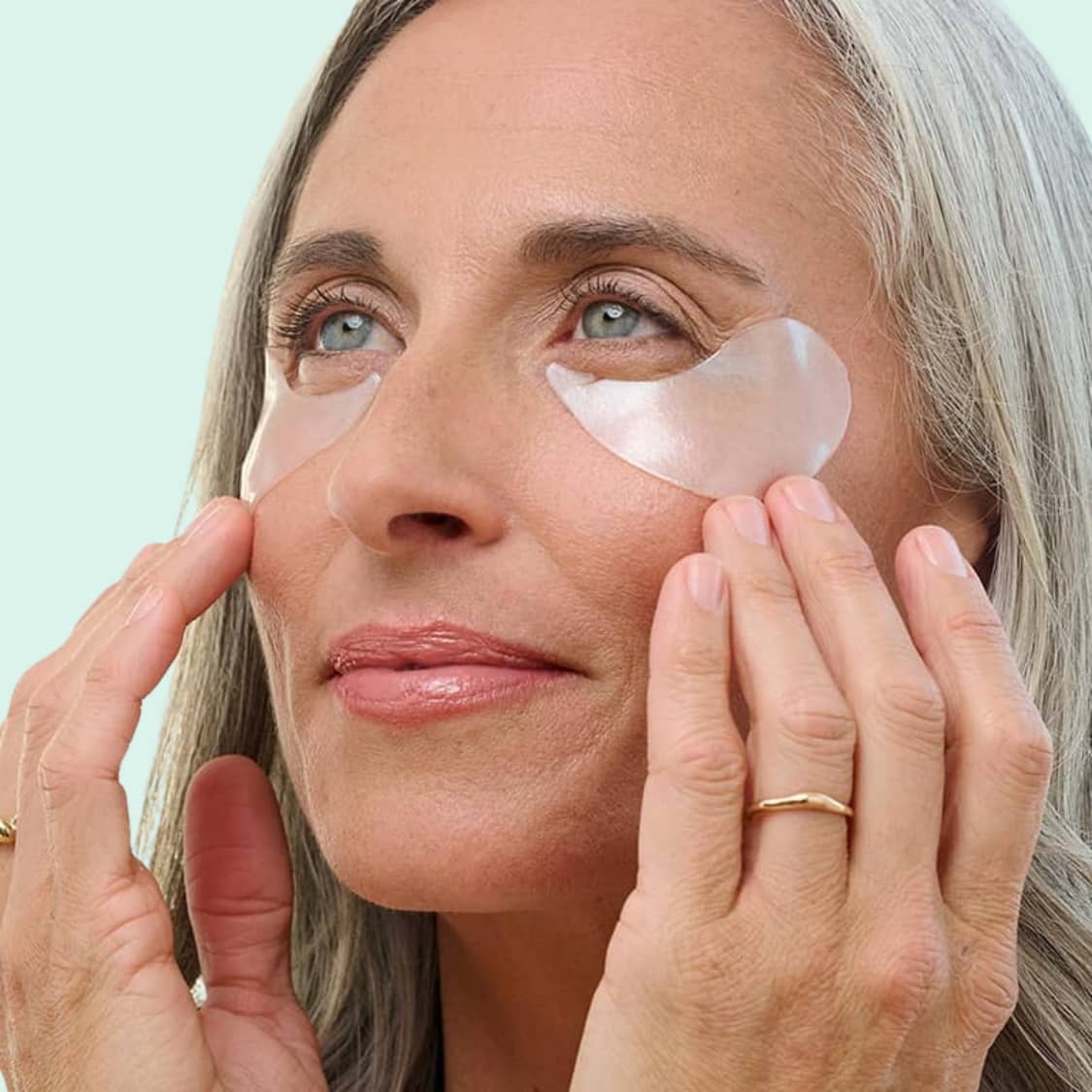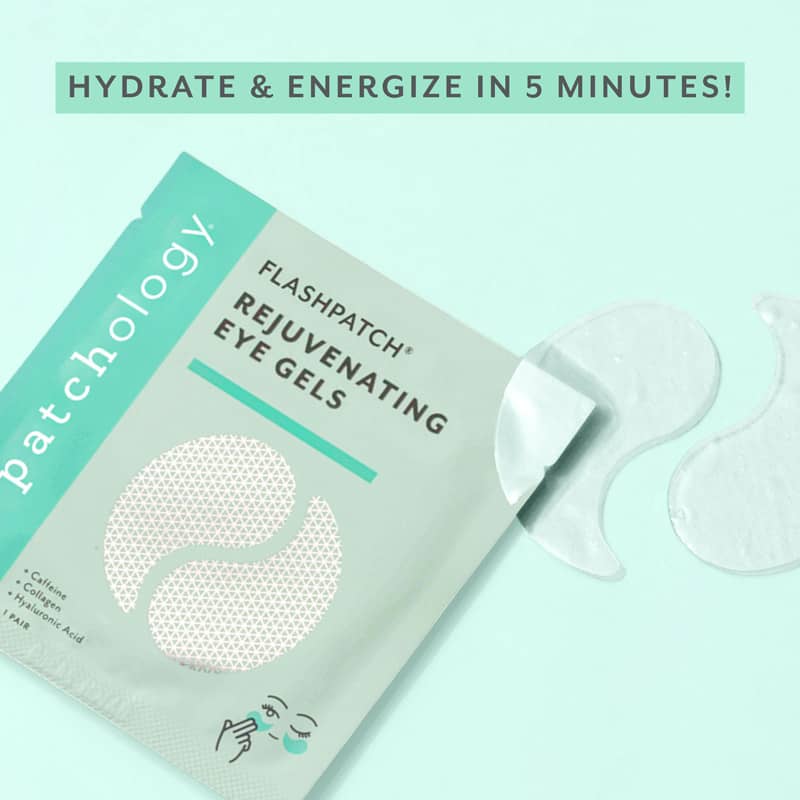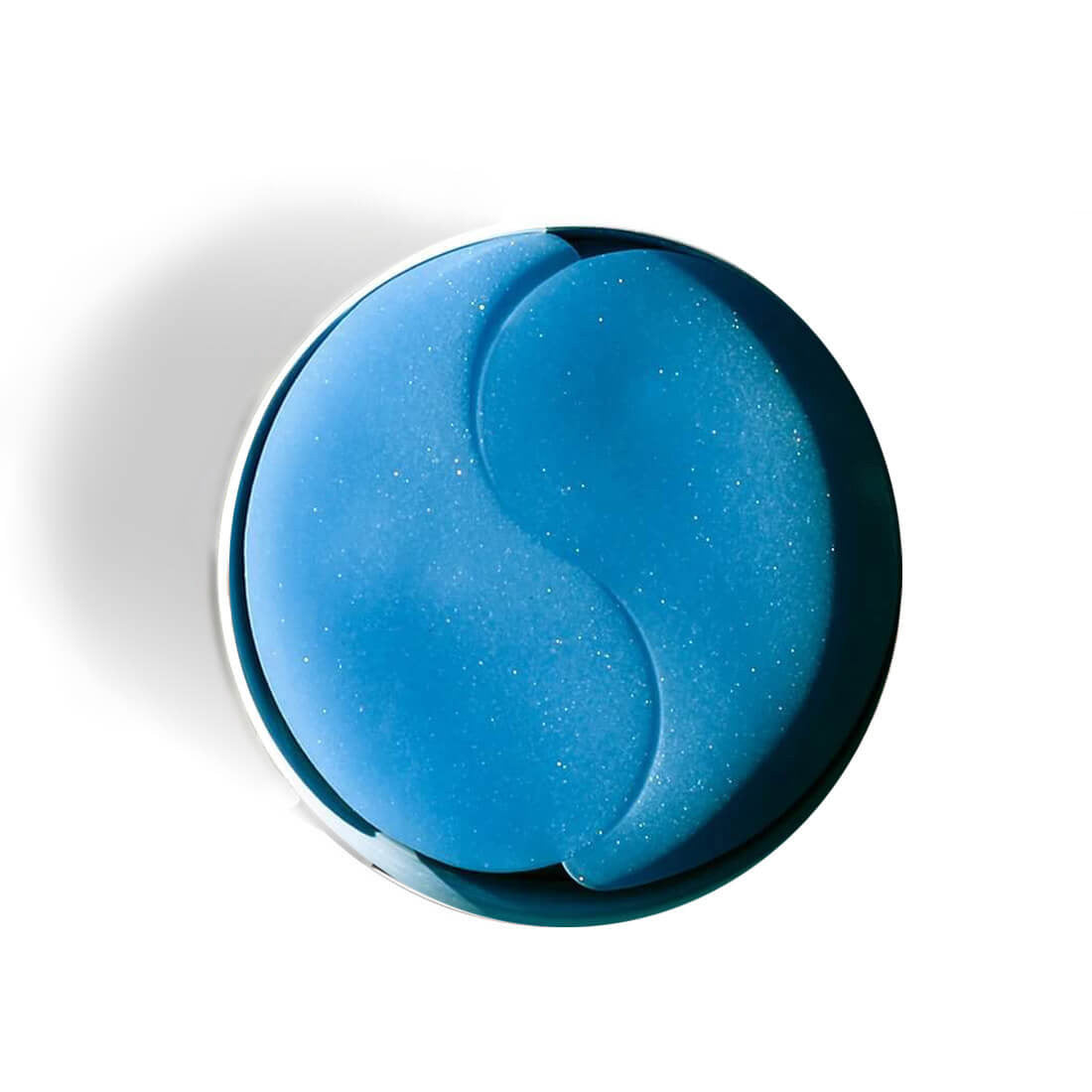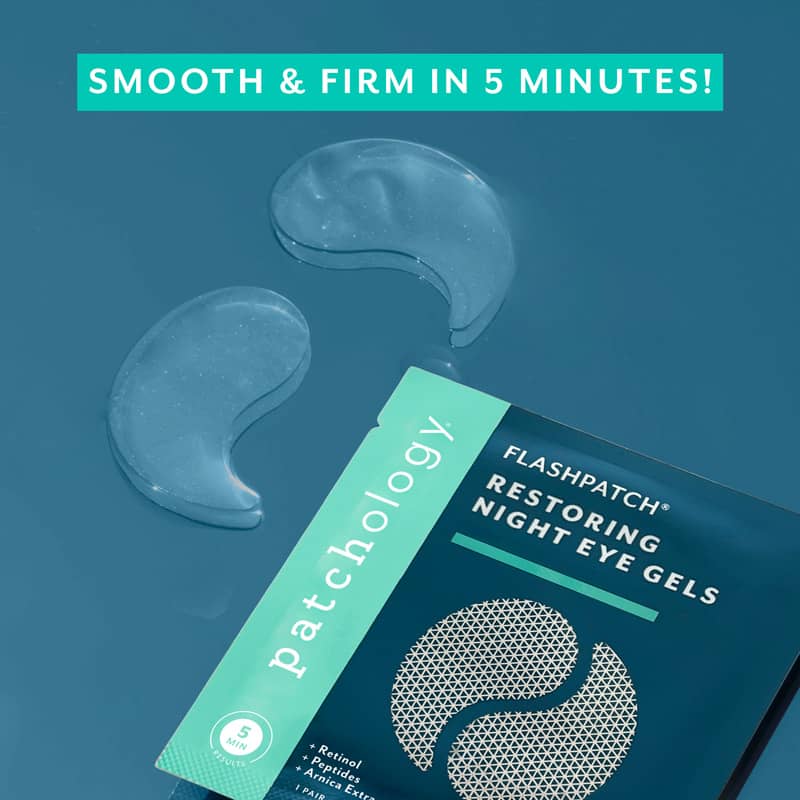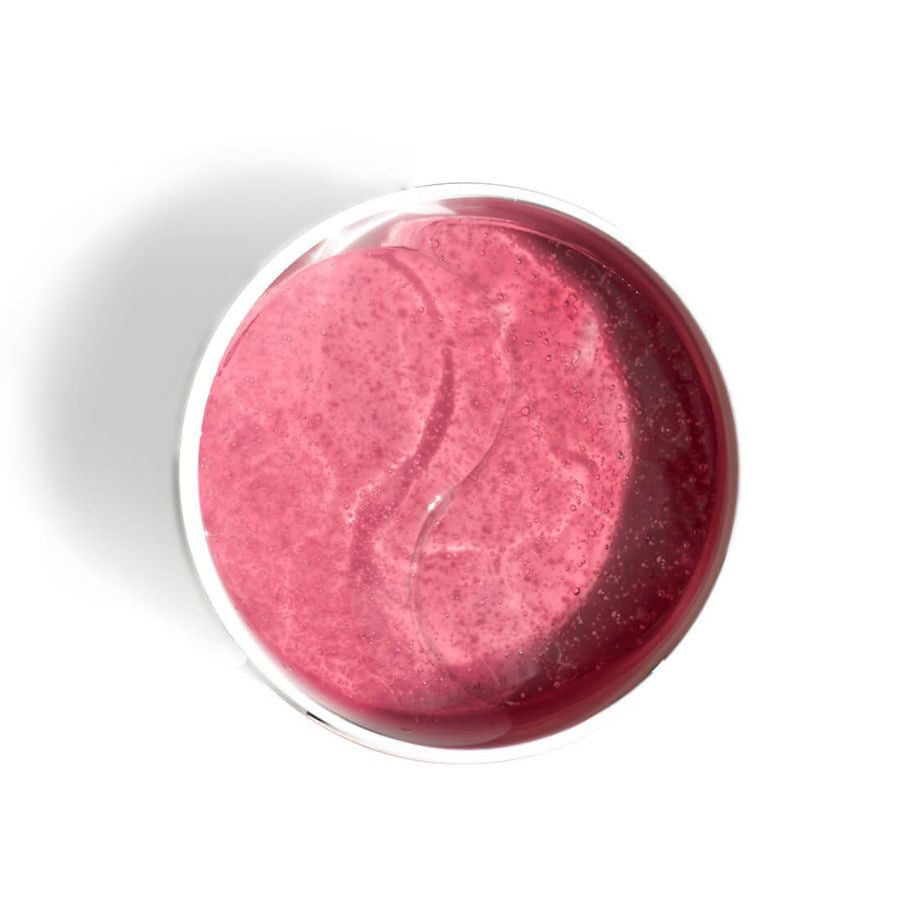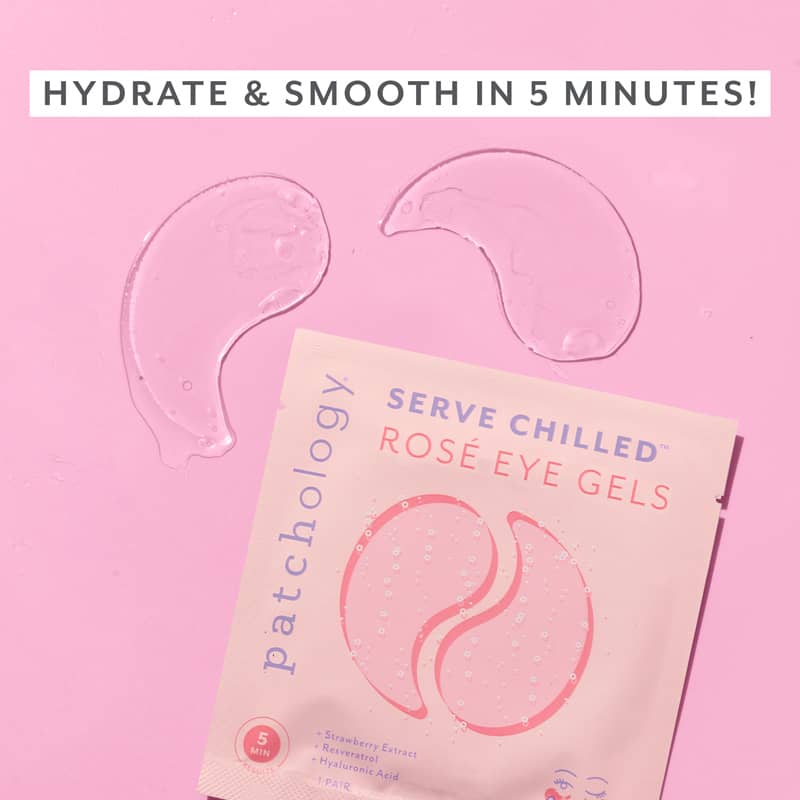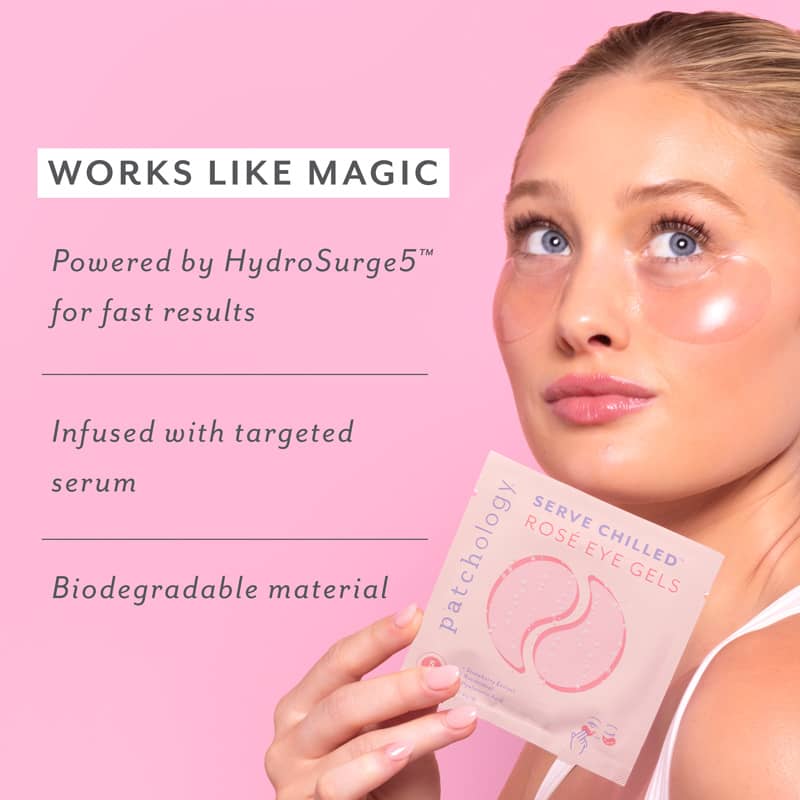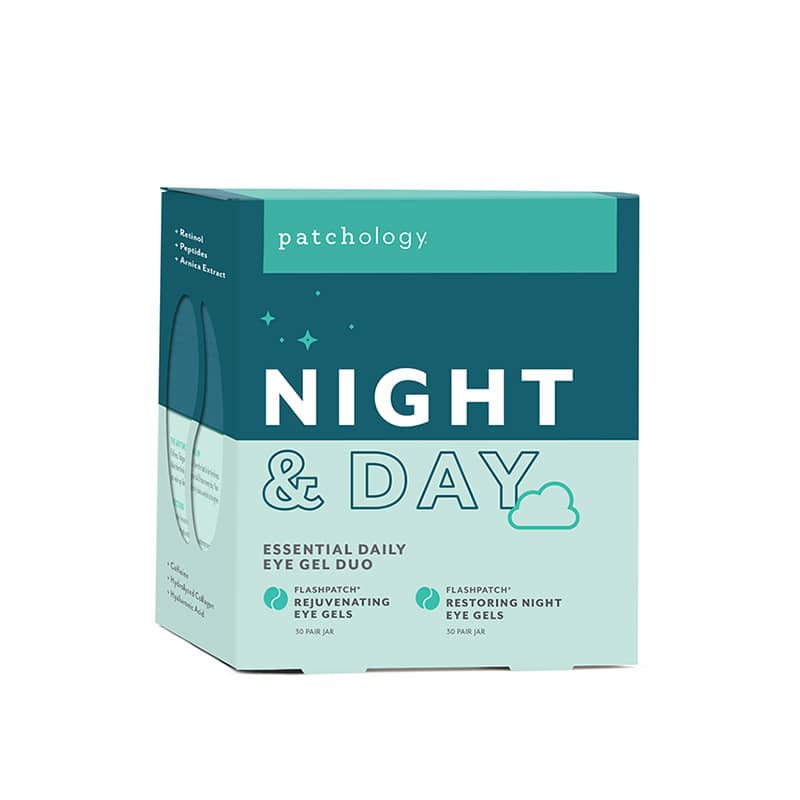The Seasonal Struggle Is Real
Spring brings blooming flowers, warmer temperatures, and for millions of people, the unwelcome return of seasonal allergies. Beyond the sneezing and congestion lies another frustrating symptom that rarely gets enough attention: puffy, irritated eyes. That telltale under-eye swelling isn't just annoying: it can make you look exhausted even after a full night's sleep.
When pollen counts soar, histamine responses don't just affect your sinuses; they trigger inflammation around the delicate eye area, leading to fluid retention and that dreaded puffy appearance. The skin around your eyes is already the thinnest on your face, approximately 0.5mm compared to 2mm elsewhere, making it particularly vulnerable to allergy-induced swelling.
But here's the good news: targeted skincare can make a dramatic difference in how your eyes look and feel during peak allergy season. The right combination of ingredients, techniques, and consistent care can help you reclaim your bright-eyed appearance even when pollen counts are at their highest.
Understanding Allergy-Related Eye Puffiness

The Science Behind the Swell
When allergens like pollen, dust, or pet dander enter your system during spring, your immune system produces histamine in response. This chemical messenger increases blood flow and causes fluid to leak from blood vessels—particularly noticeable in the thin, delicate skin around the eyes.
This reaction creates the perfect storm for under-eye puffiness: increased fluid retention combined with weakened capillaries and compromised lymphatic drainage. The result? Those puffy, swollen under-eye bags that make you look tired even when you're well-rested.
What makes allergy-related puffiness different from regular morning swelling is its persistence. While normal puffiness typically resolves within an hour after waking, allergy-induced swelling can last throughout the day and worsen with continued exposure to triggering allergens.
Why Traditional Solutions Fall Short
Standard eye creams often fail to address the unique challenges of allergy-season eye puffiness. While they might provide moisture, many lack the targeted anti-inflammatory and decongestant properties needed to combat allergy-specific swelling.
Cold compresses and chilled spoons have been home remedies for generations, but they offer only temporary relief. The cooling sensation feels nice and temporarily constricts blood vessels, but the effects rarely last more than 20-30 minutes—hardly enough time to get through your morning commute, let alone the entire day.
Hydrogel Eye Masks: Your Seasonal Ally
The Power of Targeted Treatment

Hydrogel eye masks represent a significant advancement over traditional eye creams when combating allergy-related puffiness. Unlike creams that sit on the surface, these masks create an occlusive barrier that forces beneficial ingredients to penetrate deeper into the skin.
What makes hydrogel eye patches particularly effective is their ability to deliver a concentrated dose of active ingredients precisely where you need them most. The gel matrix slowly releases beneficial compounds over 10-20 minutes, allowing for maximum absorption and efficacy.
When used consistently—ideally 2-3 times per week during peak allergy season—hydrogel eye masks can significantly reduce the appearance of under-eye puffiness while addressing the underlying inflammation that causes it.
Key Ingredients to Look For
Not all under-eye patches are created equal, especially when combating allergy symptoms. For maximum effectiveness during allergy season, look for these power-packed ingredients:
-
Caffeine: A powerful vasoconstrictor that reduces blood flow to the area, immediately decreasing puffiness while stimulating lymphatic drainage. Learn more about caffeine in skincare on the blog.
-
Niacinamide (Vitamin B3): Strengthens the skin barrier, reduces inflammation, and helps prevent moisture loss. Learn more about niacinamide in skincare.
-
Hyaluronic Acid: Provides intense hydration without heaviness, helping to plump and smooth the under-eye area. Six benefits of hyaluronic acid in skincare.
-
Peptides: Support collagen production and improve skin elasticity, counteracting the stretching that can occur with repeated puffiness. Learn how peptides help to restore your skin.
-
Botanical Extracts: Ingredients like green tea, cucumber, and aloe vera provide natural anti-inflammatory benefits that are particularly soothing during allergy season
The Ultimate Allergy Season Eye Care Routine
Morning Rescue Protocol

When you wake up during allergy season and discover puffy eyes staring back at you in the mirror, implement this morning rescue protocol:
Start with a gentle cleanse using lukewarm (never hot) water to remove any allergens that may have collected around your eyes overnight. Pat—don't rub—the area dry with a clean towel.
Next, store your hydrogel eye masks in the refrigerator overnight for an extra cooling effect. Apply these chilled under-eye patches for 10-15 minutes while you prepare breakfast or check emails. The combination of cooling temperature and active ingredients creates a power-packed therapy session for allergy-stricken eyes.
Follow with a lightweight eye cream containing peptides and caffeine to seal in benefits and provide ongoing protection throughout the day. Gently tap the product into the skin using your ring finger (which naturally applies the least pressure).
Nighttime Recovery Routine
Evenings offer a crucial opportunity to help your eyes recover from a day of allergen exposure:
- Start by thoroughly removing all makeup and environmental pollutants using a gentle, fragrance-free cleanser. Remember that allergens can cling to makeup, so complete removal is essential.
- Apply hydrogel eye masks for 15-20 minutes (slightly longer than your morning session) to deeply treat the day's damage. This is the perfect time to use more intensive treatment patches, as they have the entire night to work.
- After removing the patches, apply a richer eye cream formulated with regenerative ingredients like peptides, ceramides, and niacinamide. The overnight hours allow these ingredients to work optimally with your skin's natural repair cycles.
Tailoring Treatments to Your Skin Type
Sensitive Skin Solutions
Allergy season is particularly challenging for those with sensitive skin, as their complexions are already more reactive to environmental triggers. If you fall into this category, look for under-eye patches specifically formulated for sensitive skin types.
Key indicators of sensitivity-friendly formulations include fragrance-free, alcohol-free, and hypoallergenic designations. Patches that emphasize soothing ingredients like chamomile, calendula, and allantoin will provide relief without additional irritation.
The Skin Remedy eye gels from Patchology are particularly well-suited for sensitive skin during allergy season. Their gentle formulation includes calming botanicals that reduce inflammation without harsh ingredients that could trigger additional reactivity.
Dry Skin Strategies
Those with naturally dry skin face compounded challenges during allergy season, as environmental factors can further compromise the skin barrier. For this skin type, hydration-focused treatments are essential.
Look for under-eye patches rich in humectants like glycerin and hyaluronic acid, which draw moisture into the skin. Products that combine these water-attracting ingredients with occlusive agents help lock hydration in place. Try Rejuvenating Eye Gels.
A consistent routine is particularly important for dry skin types. Using hydrogel eye masks 3 times weekly helps maintain optimal hydration levels and prevents the creping and fine lines that can become more pronounced when dry skin is affected by allergies.
Oily Skin Approaches
Contrary to popular belief, oily skin types still need targeted eye care during allergy season. However, the approach should be modified to prevent congestion or milia formation.
Opt for gel-based formulations that deliver active ingredients without heavy emollients. Water-based hydrogel eye patches provide the perfect balance of treatment without excess oil. The stay-in-place Eye Want Cake might be the best under-eye masks for those with oily skin to avoid slippage.
For oily skin, frequency may need adjustment based on your skin's response. Starting with twice-weekly applications and monitoring results allows you to find your personal sweet spot for maximum depuffing without overwhelming the skin.
The Patchology Advantage for Allergy Season
Skin Remedy Eye Gels: Targeted Relief
When allergy season hits full force, Patchology's Skin Remedy eye gels offer specialized care for compromised under-eyes. What sets these hydrogel eye masks apart is their unique formulation designed specifically for irritated, puffy eyes.
The star ingredients in these patches work synergistically to combat allergy-induced puffiness: arnica reduces inflammation and improves circulation, while cucumber extract provides immediate cooling and soothing benefits. Together, they create a power-packed solution that addresses both the symptoms and underlying causes of allergy-related eye puffiness.
For best results during peak allergy season, these under-eye patches should be used consistently 2-3 times per week. The cumulative benefits become apparent after just 7-10 days of regular use, with many users reporting significantly reduced morning puffiness even on high-pollen days.
The Complete Allergy Season Kit
For comprehensive relief during allergy season, Patchology's bundled approach offers superior results. The Skin Remedy bundle combines targeted eye gels with complementary facial masks and their micro-mist for a holistic approach to allergy-affected skin.
The facial masks in this collection extend the benefits beyond just the eye area, addressing allergy-related redness and irritation across the entire face. Meanwhile, the micro-mist provides on-the-go relief when outdoor allergens trigger mid-day reactions.
Used together, this trinity of products creates a protective barrier against environmental aggressors while actively reducing existing inflammation—exactly what allergy-prone skin needs during challenging spring months.
Beyond the Patches: Complementary Strategies
Environmental Modifications
While skincare plays a crucial role in managing allergy-related eye puffiness, modifying your environment can significantly reduce symptom severity in the first place:
- Install a high-quality HEPA air purifier in your bedroom to filter out airborne allergens while you sleep. This simple change can dramatically reduce morning eye puffiness by decreasing overnight exposure to triggers.
- Consider using allergen-barrier pillowcases that prevent pollen, dust mites, and other irritants from collecting near your face during sleep. These specialized fabrics are particularly beneficial for side and stomach sleepers whose faces have extended contact with pillows.
- Shower before bed during peak allergy season or when you're returning from being outside to wash away pollen and other allergens that collect on hair and skin throughout the day. This prevents transferring these irritants to your pillowcase and eye area overnight.
Nutritional Support
What you eat significantly impacts inflammation levels throughout your body, including the delicate eye area:
- Incorporate omega-3 rich foods like fatty fish, walnuts, and flaxseeds into your diet. These healthy fats help moderate the body's inflammatory response to allergens from the inside out.
- Stay exceptionally well-hydrated during allergy season. Proper hydration supports optimal lymphatic drainage, which helps clear away the excess fluid that contributes to under-eye puffiness. Try jade rollers to increase circulation.
- Consider reducing histamine-rich foods during peak allergy times. Aged cheeses, fermented foods, and alcohol can increase the body's histamine load, potentially worsening allergy symptoms and the associated eye puffiness.
Professional Treatments: When to Consider the Next Level
Lymphatic Drainage Massage
For persistent allergy-related eye puffiness, professional lymphatic drainage massage can provide significant relief. This specialized technique helps move accumulated fluid away from the eye area, reducing puffiness while improving circulation.
Many estheticians now offer targeted eye-area lymphatic treatments during allergy season. A 15-30 minute session can produce visible results that last 2-3 days, making this an excellent option before important events or photographs during allergy season.
For at-home maintenance between professional treatments, gently tap the under-eye area from the inner corner outward using a cool jade roller or your ring finger. This simple technique helps encourage lymphatic flow and can be done while applying eye cream or after removing eye patches.
FAQ: Your Burning Questions About Eye Gels for Allergy Season

How quickly do hydrogel eye masks work for allergy-related puffiness?
Most users notice immediate temporary improvement after a single 15-minute application of quality hydrogel eye masks. The cooling sensation and active ingredients provide quick depuffing effects that typically last 4-6 hours after the first use.
However, the most impressive results come with consistent use over time. After 2-3 weeks of regular application (2-3 times weekly), the cumulative benefits become apparent, with many users reporting significantly less pronounced morning puffiness even during high pollen count days.
Can I use under-eye patches daily during allergy season?
While it's tempting to use eye patches daily when allergy symptoms are at their worst, most dermatologists recommend limiting use to 2-3 times per week for optimal results without risking irritation.
The exception is if you're using ultra-gentle formulations specifically designed for sensitive, reactive skin. In this case, some products may be suitable for more frequent use. Always check the specific instructions for your chosen product and monitor your skin's response.
Are hydrogel eye masks better than traditional eye creams for allergies?
For allergy-specific concerns, hydrogel eye masks generally outperform traditional eye creams for several reasons. Their occlusive nature forces active ingredients to penetrate more effectively, while the physical cooling and compression helps reduce swelling more dramatically than creams alone.
That said, the ideal approach combines both: use hydrogel eye masks for intensive treatment 2-3 times weekly, and apply a targeted eye cream formulated for allergy concerns daily for maintenance between treatments.
How do I store eye patches for maximum effectiveness during allergy season?
Refrigeration is the gold standard for storing eye patches during allergy season. The additional cooling effect enhances their ability to reduce inflammation and constrict blood vessels, providing enhanced relief for allergy-swollen eyes.
Store your patches in the refrigerator (not the freezer) at least 30 minutes before application. Some users keep their entire supply refrigerated during allergy season for convenience and enhanced efficacy.
Can I apply makeup over areas treated with eye patches?
Yes, in fact, using hydrogel eye patches before applying makeup during allergy season can significantly improve cosmetic application and wear. The depuffing and hydrating effects create a smoother canvas for concealer and other eye makeup.
For best results, allow 5-10 minutes after removing the patches before applying makeup. This gives any remaining serum time to fully absorb into the skin, preventing makeup from sliding or pilling.
Are more expensive eye patches worth the investment for allergy relief?
Price doesn't always correlate directly with efficacy when it comes to under-eye patches for allergy relief. More important than cost is the ingredient list—look for formulations containing targeted anti-inflammatory and depuffing ingredients like caffeine, peptides, and botanical extracts.
That said, higher quality hydrogel materials do tend to adhere better and allow for superior ingredient delivery. Investing in mid-to-high range products from reputable brands typically ensures both quality ingredients and effective delivery systems.
How can I tell if my eye puffiness is from allergies or something else?
Allergy-related eye puffiness typically exhibits several distinctive characteristics: it's often accompanied by itchiness, redness, or watering; tends to be worse in the morning and during high pollen count days; affects both eyes equally; and may fluctuate with seasonal changes or exposure to known allergens.
If your eye puffiness doesn't follow these patterns—particularly if it's asymmetrical, persistent regardless of season, or accompanied by pain—consult with a healthcare provider to rule out other causes like infection, thyroid issues, or dermatological conditions.
Can I reuse hydrogel eye patches designed for allergy relief?
Most premium hydrogel eye patches, including Patchology's offerings, are designed for single use to ensure maximum hygiene and efficacy. Attempting to reuse these patches can introduce bacteria to the delicate eye area and significantly reduces the effectiveness as most active ingredients are depleted after the first application.
Some brands do offer reusable silicone eye patches, but these function differently—they create an occlusive barrier to enhance the absorption of separately applied serums rather than delivering active ingredients themselves.
Do under-eye patches help with dark circles caused by allergies?
Allergies can contribute to dark circles in two ways: by causing vascular congestion (creating a purplish hue) and by prompting rubbing of itchy eyes (leading to post-inflammatory hyperpigmentation). Quality eye patches can help address both issues.
Look for patches containing brightening ingredients like niacinamide, vitamin C, and peptides alongside the standard depuffing compounds. These combinations target both the shadowing effect caused by puffiness and the pigmentation issues that can develop during allergy season.
The Bottom Line: Your Seasonal Strategy
Key Takeaways for Allergy-Season Eye Care
The battle against allergy-induced eye puffiness requires a multi-faceted approach combining targeted skincare, environmental modifications, and a consistent routine:
-
Consistency vs intensity: Regular use of quality hydrogel eye masks 2-3 times weekly yields better results than sporadic intensive treatments
-
Temperature matters: Cold storage enhances the efficacy of eye patches by adding physical depuffing benefits to the chemical actions of ingredients
- Complete care wins: Addressing the entire face with compatible products like Patchology's Skin Remedy Collection prevents allergens and irritation from migrating to the eye area
Combat Puffy Eyes During Allergy Season: Pro-Tips
Prevention Strategies
- Minimize Exposure: Keep windows closed during high pollen seasons
- Use Air Purifiers: Helps filter allergens from indoor air
- Wear Sunglasses: Creates a barrier against airborne allergens
- Avoid Rubbing: Touching eyes can worsen swelling
- Stay Hydrated: Drink plenty of water to reduce fluid retention
Relief Techniques
- Cold Compress: Apply for 10 minutes to reduce swelling
- Eye Masks: Chilled Bubbly or Perk Up with green tea contain antioxidants
- Eye Drops: Reduce itching and inflammation
- Rinse Off: Shower after you return from being outside to wash off the allergens
- Allergy-Proof Bedding: Use hypoallergenic pillowcases
For persistent or severe symptoms, consult with an allergist.
Seasonal Preparation: Planning Ahead
The most successful approach to managing allergy-related eye puffiness is proactive rather than reactive. Begin your specialized eye care routine 2-3 weeks before your typical allergy season starts to strengthen the skin barrier and reduce baseline inflammation.
Creating a seasonal skincare calendar that incorporates more intensive eye care during peak allergy months ensures you're never caught unprepared when symptoms strike. Consider stocking up on your chosen under-eye patches before the season begins, as many specialized products sell out when demand peaks during high allergy months.
The investment in quality eye care products specifically formulated for allergy concerns pays dividends not just in appearance but in comfort throughout the challenging spring season. With the right approach, you can face allergy season with confidence—and eyes that look as good as they feel.



